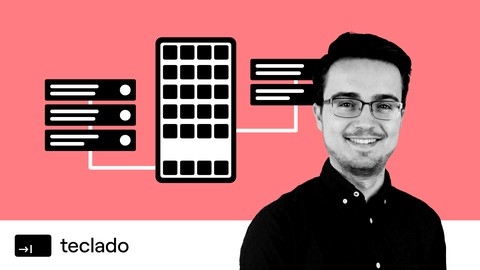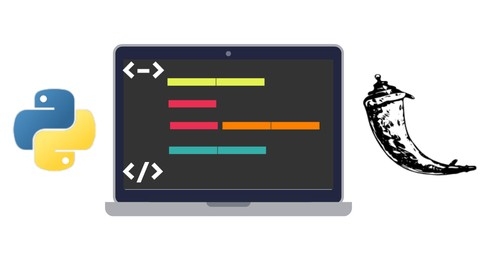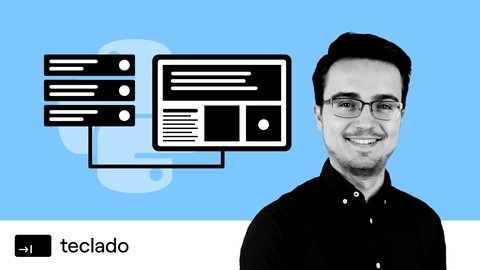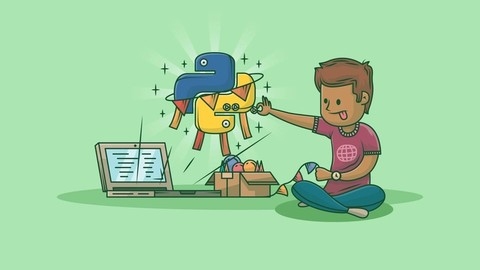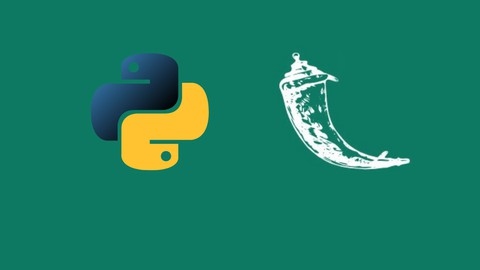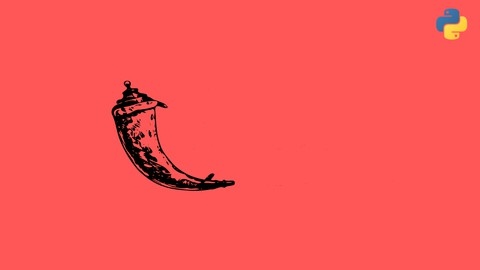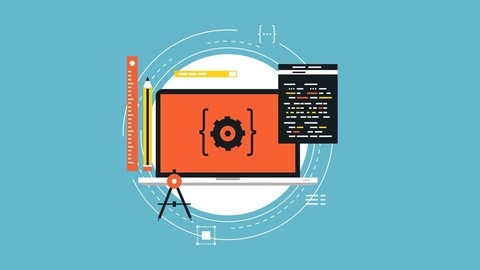Flask is a popular Python web framework that simplifies the development of web applications.
It’s known for its lightweight nature, flexibility, and ease of use, making it a great choice for both beginners and experienced developers.
By learning Flask, you can build dynamic web applications, REST APIs, and even complex microservices, opening doors to exciting career opportunities in web development.
Finding a comprehensive and effective Flask course on Udemy can be a challenge, with so many options vying for your attention.
You’re looking for a course that goes beyond the basics, providing practical projects and real-world applications to solidify your understanding.
We’ve thoroughly reviewed numerous Flask courses on Udemy and, based on our analysis, "REST APIs with Flask and Python in 2024" emerges as the best course overall.
This comprehensive course combines a Python refresher with hands-on Flask development, taking you from building basic APIs to implementing advanced features like authentication and deployment.
It also covers Docker, Flask-Smorest, SQLAlchemy, and more, equipping you with the skills to build robust and scalable applications.
While “REST APIs with Flask and Python in 2024” is our top pick, we understand that your learning needs might differ.
Keep reading for our full list of recommendations, which includes courses focused on specific Flask aspects like web development, API building, and advanced concepts.
REST APIs with Flask and Python in 2024
The course starts by ensuring you have the proper setup, guiding you through installing Python on Windows and Mac.
It then dives into a comprehensive Python refresher, covering essential concepts like variables, data structures (lists, tuples, sets), control flow (if statements, loops), functions, object-oriented programming, and more.
This refresher is valuable, ensuring you have a solid foundation before diving into Flask development.
Once the Python basics are covered, you’ll jump into building your first REST API using Flask.
You’ll learn how to create API endpoints, work with JSON data, interact with the API using tools like Insomnia, and implement core functionality like creating, retrieving, updating, and deleting data.
The course then introduces you to Docker, teaching you how to run your Flask app in a Docker container, making it easier to deploy and share your application.
To streamline API development, you’ll learn how to use the Flask-Smorest extension, which simplifies creating REST APIs and automatically generates documentation.
You’ll also dive into data modeling improvements, new endpoints, and advanced Flask concepts like Blueprints and MethodViews.
Data persistence is crucial for any real-world application, so the course covers integrating a SQL database using SQLAlchemy and Flask-SQLAlchemy.
You’ll learn how to define models, perform CRUD operations, implement one-to-many and many-to-many relationships, and more.
User authentication is another essential aspect covered, with the course teaching you how to implement JWT-based authentication using Flask-JWT-Extended.
You’ll learn about JWT claims, authorization, token refreshing, and securing endpoints.
As your application grows, managing database schema changes becomes critical.
The course covers using Alembic and Flask-Migrate for database migrations, allowing you to modify your database schema without rebuilding the entire database.
To help you collaborate with other developers, the course includes a Git crash course, covering concepts like repositories, commits, branches, merging, and resolving merge conflicts.
Towards the end, you’ll learn how to deploy your REST API to a production environment using Render.com and ElephantSQL, ensuring your application is accessible to users.
Finally, the course covers task queues with rq and Redis, teaching you how to offload work to background workers and send emails using Mailgun.
Python and Flask Bootcamp: Create Websites using Flask!
You’ll start with crash courses on HTML, CSS, and Bootstrap to build a solid foundation for web development.
The syllabus then dives into Python, covering data types, control flow, functions, and object-oriented programming (OOP) concepts.
Once you’ve grasped the fundamentals, you’ll learn how to set up a Flask development environment and create basic routes.
The course then explores templates using Jinja2, handling forms, and integrating SQL databases.
You’ll also learn about user authentication, including password hashing and OAuth with Google.
As you progress, you’ll work on a large project: a company blog site that combines your newfound skills.
This hands-on experience will solidify your understanding of Flask’s capabilities.
Additionally, you’ll learn how to create REST APIs using Flask-RESTful and handle authorization with Flask-JWT.
The deployment section covers hosting your Flask applications on Heroku, a popular cloud platform.
You’ll even learn how to integrate Stripe for accepting payments within your web applications.
Throughout the course, you’ll have access to exercise files, solutions, and a FAQ section to address common queries.
Web Developer Bootcamp with Flask and Python in 2023
You’ll start by refreshing your Python skills, covering essentials like variables, data structures, functions, and object-oriented programming.
This solid foundation prepares you for the web development modules.
The course dives into HTML and CSS, teaching you how to structure web pages and style them beautifully.
You’ll learn about semantic HTML, the box model, CSS selectors, and techniques like BEM for organized styling.
Exciting projects like a micro-blog let you apply these concepts hands-on.
Next, you’ll explore backend development with Flask, a lightweight Python web framework.
You’ll master Jinja2 templating, working with data structures, conditionals, and loops in your templates.
The course covers receiving form data, storing entries in MongoDB, and deploying your Flask apps to Render.com.
Jinja2 mastery is a key focus, with dedicated sections teaching you advanced features like macros, inheritance, includes, whitespace control, and routing.
You’ll build real-world projects like a habit tracker and a personal portfolio, applying responsive design with CSS Grid and media queries.
User authentication is demystified through lessons on cookies, sessions, password hashing with passlib, and creating login-required decorators.
The capstone project, a movie watchlist app, ties everything together - user authentication, dark mode, WTForms, custom widgets, and personalization based on logged-in users.
Throughout the course, you’ll gain hands-on experience with tools like MongoDB Compass, GitHub, and gunicorn for concurrency on Render.com.
The syllabus covers both theoretical concepts and practical applications, ensuring you emerge as a well-rounded Flask and Python web developer.
Python REST APIs with Flask, Docker, MongoDB, and AWS DevOps
You’ll begin by setting up a virtual environment with VirtualBox and Ubuntu, then dive into Flask itself - installing it, creating a Hello World app, understanding JSON and handling GET/POST requests.
This lays the foundation for building your first RESTful API project.
The course then moves into more advanced topics like Docker and MongoDB.
You’ll learn what Docker is and how to dockerize applications, as well as an introduction to the MongoDB database and performing CRUD operations.
This is followed by building APIs that integrate with MongoDB, like a user tracking app.
Several more substantial projects are included, such as a “Database as a Service” API that stores user sentences, a similarity checking API using natural language processing, and an image recognition API with TensorFlow and deep learning models.
There’s even a banking API that handles transactions.
Towards the end, you’ll deploy one of the APIs to an AWS EC2 instance, giving you hands-on experience with cloud deployment.
The course covers both the core Flask concepts as well as integrating it with other modern tools and workflows like Docker, databases, and cloud services.
The projects allow you to apply the concepts to real-world use cases across areas like NLP, image recognition, and finance.
Python And Flask Framework Complete Course For Beginners
The syllabus starts by laying a strong foundation in Python programming fundamentals, covering everything from variables and data types to advanced concepts like decorators, generators, and regular expressions.
You’ll dive deep into Python’s object-oriented programming (OOP) approach, learning about classes, objects, inheritance, and operator overloading.
The course also covers essential Python topics like file handling, exceptions, and modules.
Once you’ve mastered the Python basics, the course shifts its focus to the Flask web framework.
You’ll learn how to set up a Flask environment, create routes, handle HTTP methods, and work with templates.
The syllabus covers crucial Flask concepts like URL building, request and session objects, cookies, redirects, and error handling.
The course doesn’t stop there – it also explores file uploading, Flask extensions (like Flask-Mail and Flask-WTF), and integrating databases like SQLite and SQL Alchemy with your Flask applications.
By the end, you’ll even learn how to deploy your Flask applications.
Python And Flask Framework Complete Course
You’ll start by getting comfortable with the basics of Python - running scripts from the command line, understanding classes, objects, arrays, and the interactive shell.
The course covers the core Python syntax like keywords, indentation rules, identifiers, and quotations.
It dives deep into Python’s data types - numbers, strings, lists, tuples, and dictionaries.
You’ll learn how to perform operations on these data structures using built-in functions and methods.
Concepts like indexing, slicing, and matrix operations are covered for lists.
The course takes you through Python’s decision-making capabilities with if-else statements and loops (while and for loops).
You’ll understand loop control statements like break, continue, and pass.
Nested loops are also explained.
Moving on, you’ll learn about Python functions - parameters, arguments (required, keyword, default), anonymous functions, return values, and variable scope.
Modules, packages, and namespaces are covered to help organize code.
The second half focuses on the Flask web framework.
You’ll learn how to set up the environment, create routes with variable rules, build URLs, and handle different HTTP methods.
Working with templates, static files, requests, cookies, and sessions is explained.
Redirects, error handling, message flashing, and file uploading techniques are demonstrated.
The course explores Flask extensions like mail and WTF for forms.
You’ll integrate databases like SQLite and use SQLAlchemy for advanced database operations.
Finally, you’ll learn how to deploy your Flask applications, making them accessible to the world.
There’s also a bonus lecture, likely covering additional tips and best practices.
Python And Flask Demonstrations Practice Course
The syllabus covers an extensive range of Python concepts, starting with the basics like installing Anaconda, variables, data types, and progressing to more advanced topics like decorators, generators, and regular expressions.
You’ll dive into core Python features such as classes, objects, arrays, tuples, sets, modules, file management, dictionaries, strings, numbers, namespaces, scopes, iterators, and iterations.
The course also covers essential programming concepts like inheritance, function arguments, errors, exceptions, try-except blocks, and the object-oriented programming (OOP) approach.
Interestingly, it delves into practical implementations like nested dictionaries, operator overloading, matrix implementation, list comprehension, shallow and deep copying, lambda functions, and the @property decorator.
You’ll also learn about Python’s input/output operations and importing modules.
Moving on to Flask, the syllabus covers setting up the Flask environment, building URLs, handling HTTP methods, working with static files, templates, cookies, redirects, error handling, message flashing, file uploading, and the mail extension.
Additionally, it introduces you to the WTF extension for form handling and integrates SQLite and SQL Alchemy for database operations.
Python Flask for Beginners: Build a CRUD web app using Flask
The syllabus covers all the essential topics you need to build a full-fledged web application using the Flask framework.
It starts by explaining the basics of how the web works, with the interaction between clients and servers.
You’ll then set up your development environment, whether you’re on Windows, Mac, or Linux, and run your first Flask application.
The course dives into the structure of a Flask app, teaching you about the app.py file, adding templates, and working with images.
A key aspect is learning to use the Jinja2 template engine, which allows you to dynamically generate HTML.
You’ll learn how to use control structures like for loops and if statements in Jinja2, as well as create a layout for all your templates.
The course also covers adding CSS to your application using Bootstrap, a popular front-end framework.
This will help you style your web app and make it visually appealing.
Moving on, you’ll learn how to add a MySQL database to your application.
The course covers basic CRUD (Create, Read, Update, Delete) queries and how to connect Flask to a MySQL database using the flask-mysqldb library.
Understanding HTTP verbs (GET, POST, PUT, DELETE) and status codes is crucial for web development, and this course covers that as well.
You’ll then apply this knowledge in a mini-project where you’ll submit a form to a database.
The syllabus also includes essential topics like handling sessions in Flask, hashing sensitive data, adding a navigation bar, and using flash messages to provide feedback to users.
Finally, you’ll build a complete blog application as a final project, putting together everything you’ve learned.
This includes designing the database, defining endpoints, building the front-end, implementing user registration and login, and allowing users to create, view, edit, and delete blog posts.
Scalable Web Applications with Python, Flask, and SQLAlchemy
You’ll start by understanding why web development can be complicated and the reasons behind choosing Flask and its prerequisites.
After setting up your development environment with Python, virtual environments, and PyCharm, you’ll dive into building basic Flask applications, handling HTTP requests, and routing.
The course then explores the powerful Jinja2 templating engine, teaching you how to render HTML templates, use filters, and create reusable macros.
This is crucial for building dynamic, data-driven web pages.
Working with databases is a key aspect, and you’ll learn how to set up PostgreSQL, create tables, and perform CRUD (Create, Read, Update, Delete) operations using SQLAlchemy, a Python SQL toolkit.
You’ll also establish relationships between database models, enabling you to build complex data structures.
Version control is essential for collaborative development, so you’ll learn how to work with Git and GitHub, mastering essential commands for managing your codebase.
The course delves into understanding Flask contexts and context variables, which are critical for managing application state and data flow.
You’ll also explore scalable architectures, enabling your applications to handle increasing traffic and user loads.
User authentication and form handling are covered in-depth, including user registration, login/logout functionality, password hashing with bcrypt, and data validation techniques.
You’ll learn how to integrate Twitter Bootstrap for improved design and create forms for CRUD operations.
Error handling is another important aspect, with a dedicated section on handling 404 errors and other exceptions.
Finally, you’ll learn how to deploy your Flask applications to Heroku, a popular cloud platform, including restoring PostgreSQL databases from Amazon S3.
The Ultimate Flask Course
You’ll start by learning the basics common to all Flask apps, including installation, running apps, routing, handling different request data types, redirects, configurations, and sessions.
This lays a solid foundation for building Flask applications.
Next, you’ll dive into templates, a crucial aspect of Flask for rendering dynamic web pages.
You’ll learn how to use template variables, conditionals, loops, static files, inheritance, and includes.
The course then guides you through integrating a SQLite database with Flask, covering database creation, connections, queries, insertions, and displaying results.
This practical knowledge is reinforced by building a food tracker app that demonstrates CRUD operations.
Moving forward, you’ll learn Flask-SQLAlchemy, an extension that simplifies database operations.
You’ll create tables, insert, update, and delete data, run various queries, and handle relationships between tables.
The syllabus covers several other essential Flask extensions like Flask-WTF for form handling, Flask-Bootstrap for responsive UI, Flask-Mail for sending emails, Flask-Migrate for database migrations, Flask-Uploads for file uploads, Flask-Login for authentication, Flask-Admin for admin interfaces, Flask-User for user management, Flask-Babel for internationalization, Flask-Restless for building REST APIs, Flask-SocketIO for real-time communication, and Flask-Security for comprehensive authentication.
You’ll apply your knowledge by building real-world projects like a Twitter clone called “Engage!”, an ecommerce store app, a forum app, and a weather app.
These hands-on projects will solidify your understanding of Flask and its extensions.
Throughout the course, you’ll learn deployment techniques, including setting up servers on Amazon Lightsail, Heroku, and PythonAnywhere.
You’ll also learn to handle common issues like CSRF protection, JavaScript integration, and environment variables.
